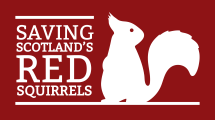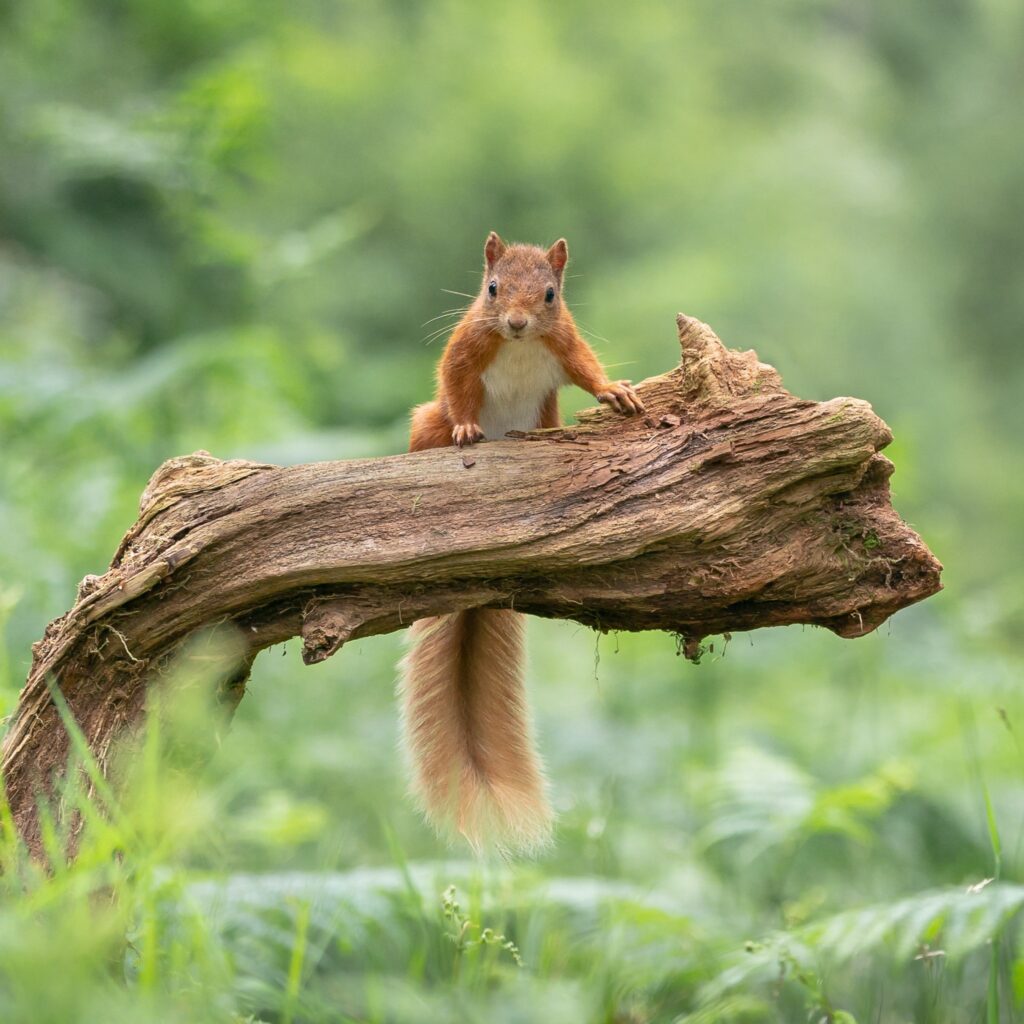Picture this: you’re in Scotland, you’re out for a walk, you spot a squirrel and report it to our sightings page (thank you!). But now what happens? Today we’re going behind the scenes of what happens to all the squirrel sightings you record.
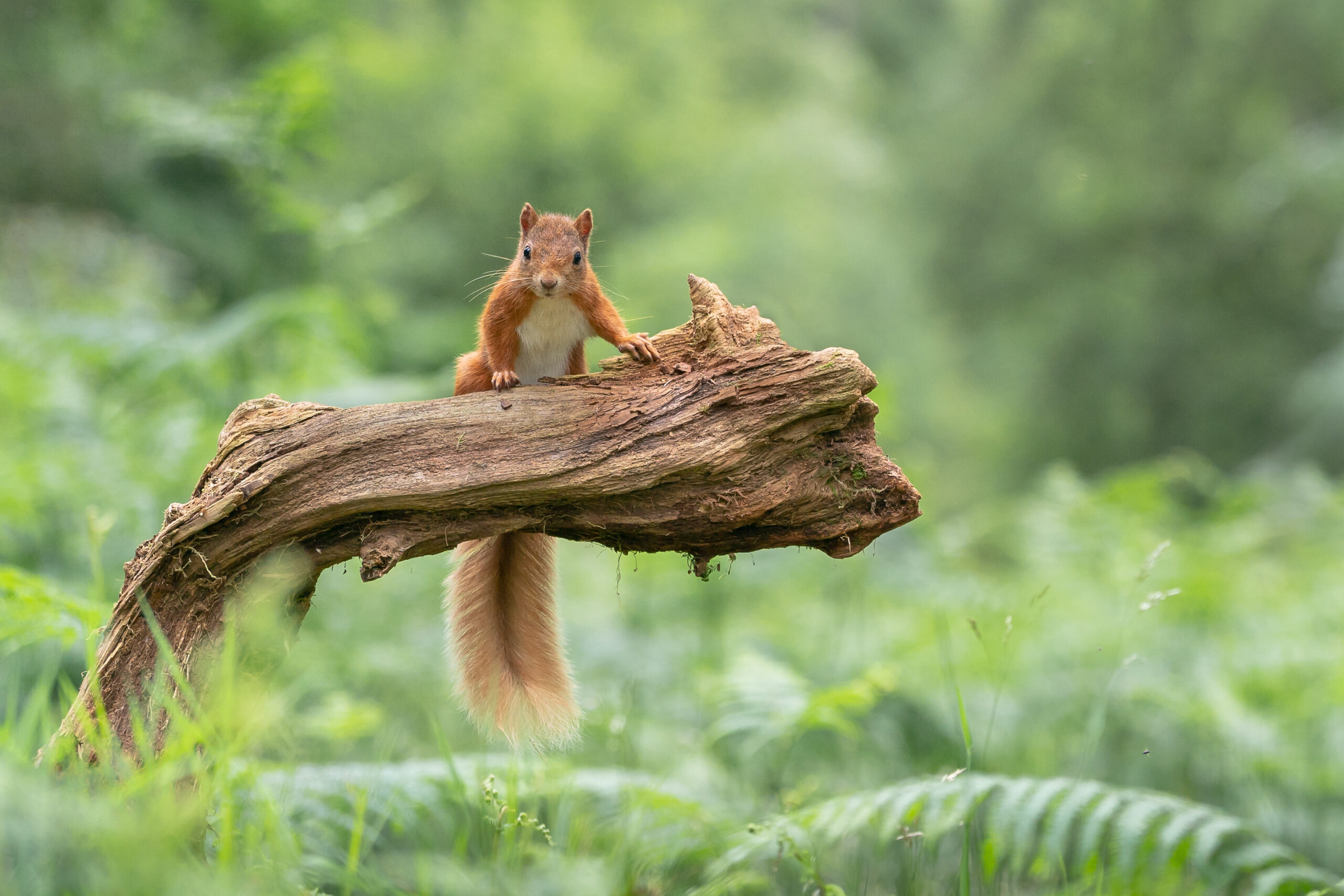
Raymond Leinster
It only takes a few seconds to record a squirrel sighting on our website. We ask for a few details; what species was the squirrel, was it alive or dead, what location did you see it and what the habitat around you was. There’s also space to add more details if you have them, or tell us anything else about your sighting. Sometimes it can be hard to tell a red from a grey, so check out our handy guide here.
Then, each report is checked by one of our expert team of verifiers. These are staff and volunteers based across Scotland, each covering different areas which they know well. Our verifies look at the report, checking:
- Location – is this a feasible location for a squirrel to have been spotted (e.g. we have had reports with the grid reference in the middle of the North Sea!)
- Fact check – has the right species been selected (e.g. has it been ticked as a grey squirrel, but described as a red squirrel later on). Or is habitat is listed as woodland but the location on the map is showing as an urban garden?
- Feasibility – how certain are we that the report is correct. If a red squirrel is reported in the middle of Glasgow, we’ll want to follow up asking for more information as that would be very unusual.
- More information needed – if we’re happy the report is genuine, we still might follow up for more information, particularly is the squirrel has been reported sick, or somewhere unusual for the species.
- Any action needed – if the report is of a grey squirrel in a red squirrel area (particularly the North East), and we’ve confirmed the sighting is correct, then it’s time to act. A grey squirrel in one of our priority areas means all hands on deck! That could mean a post on social media with a map showing the sighting, and a call for people to keep their eye out. It also means our team on the ground will focus their efforts that area, contacting the landowner or local volunteers to increase monitoring and trapping here.
- Update the report – our verifiers then update the status of the sighting to: pending (if we’re waiting to confirm), confirmed or invalid. All confirmed sightings will then appear on the public map, available on our website.
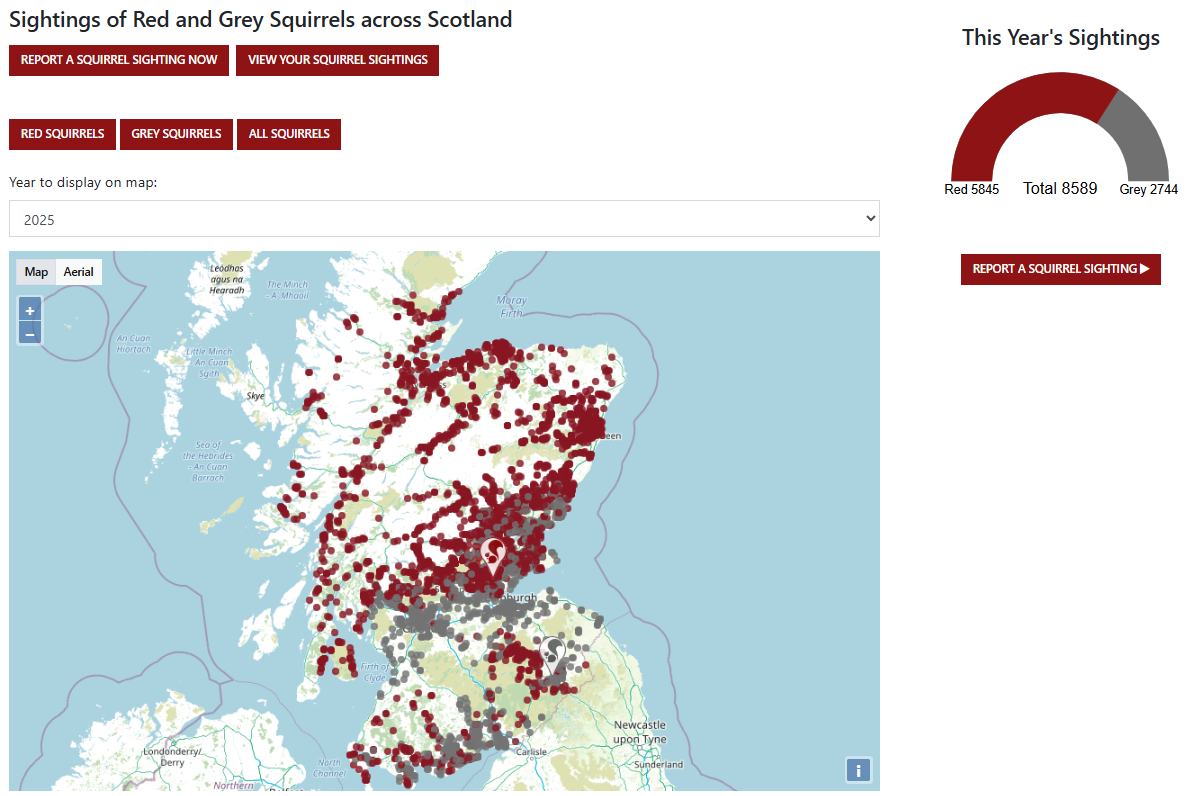
Our sightings map
Our sightings map is a really important tool in our work. On a small scale, it shows where greys are being seen and where we can have the most impact with our work. On a large scale, geographic and year to year, it shows populations changing and moving, we can compare years and seasons. We can also compare other data with our sightings, for example if we know whether a particular year was a ‘mast year’ when lots of nuts and seeds are produced, and look at how that affected the population.
We also have some idea of what humans are up to year on year based on squirrel sightings! More sightings come in from areas where there are lots of people, but we also noticed a huge increase in the number if squirrels reported during the Covid-19 lockdown, as more people stayed local and saw squirrels on their daily walks. It’s also useful to see where people are feeding squirrels in their gardens (let us know in the ‘extra information’ section when you submit your sighting). For top tips on what to feed you garden reds, take a look at our list here.
The nationwide map is a brilliant resource, but your sightings also help us produce other maps. Our Data Officer uses confirmed records to create maps for the project, for reports, social media, presentations, workshops, funding applications and for this blog!
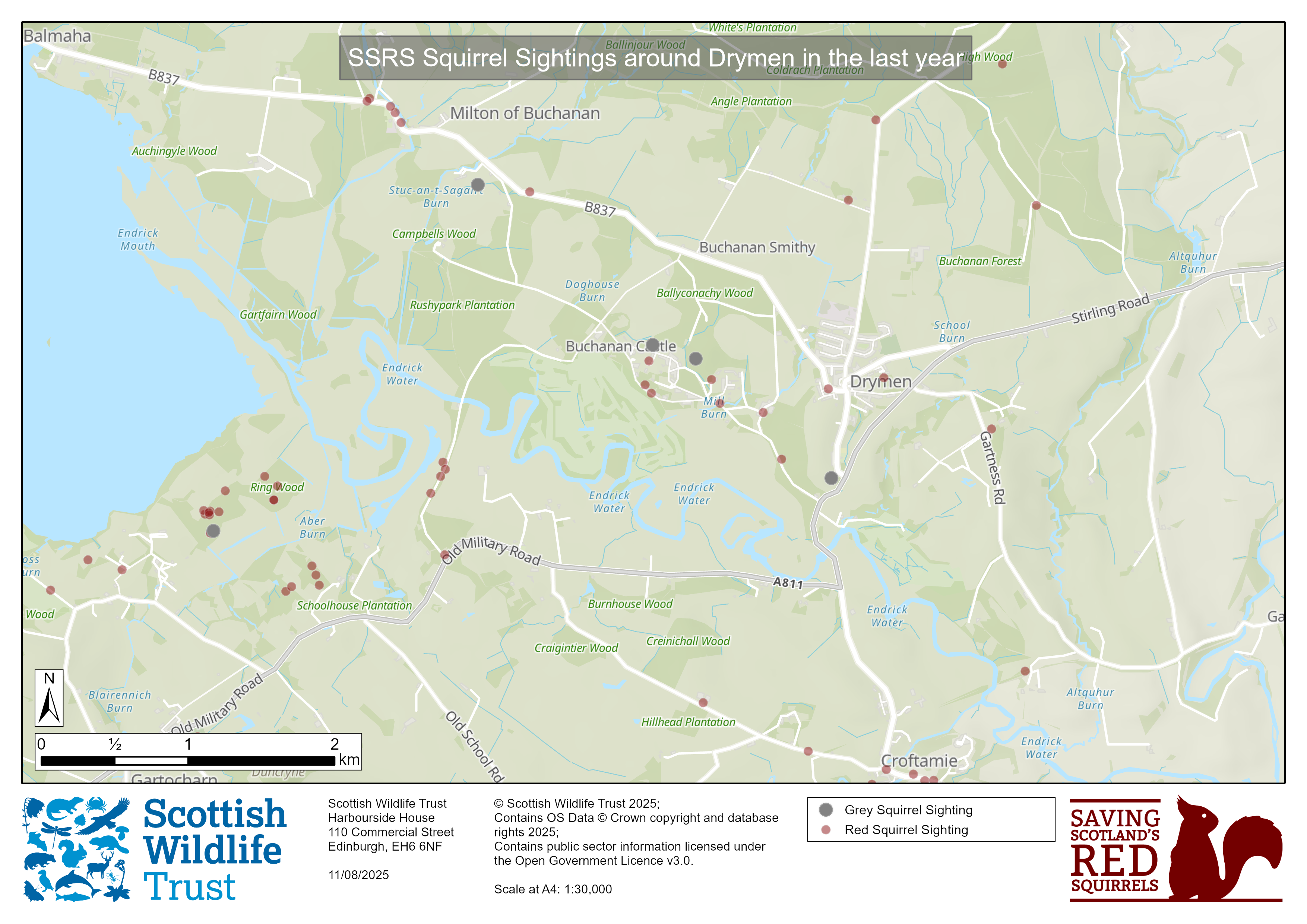

Left: a map used for a callout on social media for more sightings in the Drymen area. Right: four maps comparing the red squirrel population in Aberdeen in 2009, 2017, 2021 and 2024.
So, as you can see, your reports make up part of a much bigger picture, they’re so important for the work we do to protect Scotland’s only species of squirrel. Please keep reporting any squirrels you see, anywhere in Scotland. The sooner you add your sighting after seeing a squirrel, the sooner we’re able to act on it and add it to our database.
Thank you for your support!
